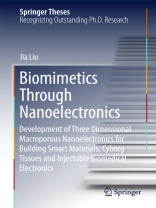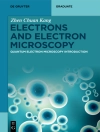This thesis presents original research on how to seamlessly integrate electronics with living biological systems. Jia Liu has used silicon nanowires as active sensors to investigate biological signals at the cellular level. He has also designed nanoelectronic networks into flexible, three-dimensional (3D) and macroporous architectures, which mimic the structure of tissue scaffolds for in vitro 3D integrations with synthetic tissues and in vivo implantation by means of syringe injection. Importantly, the results demonstrate 3D interpenetrations of nanoelectronic networks with neural networks, 3D mapping of tissue activity and long-term implantation with minimal immunoresponses. Further, the book discusses potential applications for pharmacological studies, brain activity mapping and nanoelectronics enabled therapies. The findings presented here have gained wide recognition, including a top research ranking by Chemical & Engineering News and being listed among Scientific American’s10 world changing ideas in 2015.
قائمة المحتويات
Introduction.- Three-dimensional macroporous nanoelectronics network.- Integration of three-dimensional macroporous nanoelectronics with materials.- Three-dimensional macroporous nanoelectronics scaffold innervated synthetic tissue.- Syringe Injectable Electronics.- Outlook.
عن المؤلف
Jia Liu received his Ph.D. degree in Chemistry from Harvard University in 2014. His Ph.D. research with Prof. Charles M. Lieber included the fundamental studies of high performance silicon nanowire field-effect transistors and their applications in three-dimensional soft nanoelectronics, regenerative medicine, neuroscience and neuroengineering. He is now working as postdoctoral fellow with Profs. Zhenan Bao, Karl Deisseroth and Anson Lee at Stanford University to develop soft electronic systems for wearable technology, patient-specific cardiac diagnosis and genetically-targeted brain-machine interface.












